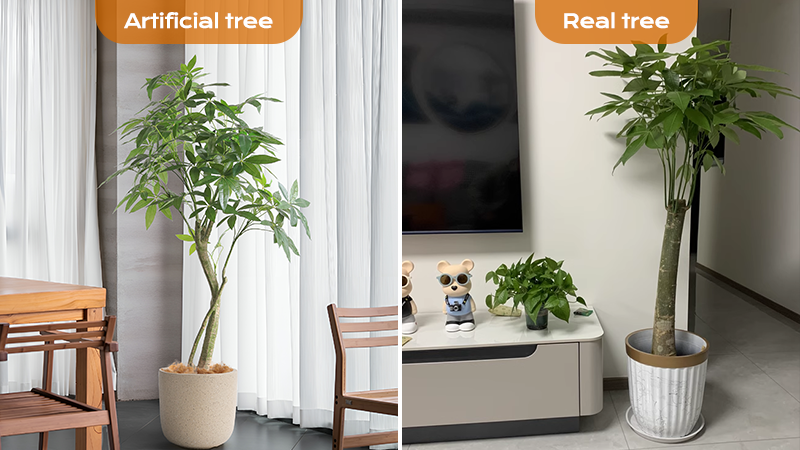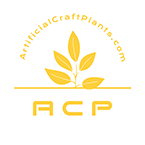Many wonder whether real or artificial plants are better. Understanding their differences can simplify your choice. Let's dive in to make the best decision for your home.
Real and artificial plants offer distinct advantages depending on your needs and lifestyle.
Both options have unique qualities. Keep reading to explore which is right for you and your space.
Is it better to have real or fake plants in house?
Real plants breathe life into homes, but caring for them can be challenging. Artificial plants offer hassle-free beauty but lack natural benefits.
The choice depends on your priorities for maintenance, aesthetics, and functionality.
Pros and Cons of Real and Artificial Plants
When deciding, consider these factors:
| Criteria | Real Plants | Artificial Plants |
|---|---|---|
| Maintenance | Requires watering and sunlight | No upkeep needed |
| Lifespan | Limited without proper care | Long-lasting with minimal attention |
| Environmental Impact | Improves air quality air quality1 | Made from synthetic materials |
| Aesthetics | Authentic and dynamic look | Consistent and customizable |
From one perspective, real plants enrich indoor air and enhance your home’s ambiance. But they require effort, which can deter busy individuals. On the other hand, artificial plants are ideal for those wanting aesthetic appeal without the demands of upkeep. Balancing these considerations can help align your choice with your needs.
Do people still use fake plants?
Fake plants were once seen as outdated, but modern designs are changing perceptions. Today, they’re widely used for convenience and versatility.
Fake plants remain popular due to their realistic appearance and low maintenance.
Why Fake Plants Are Still in Demand
Artificial plants have evolved dramatically. Modern options replicate natural textures and colors, making them indistinguishable from real plants in many cases modern fake plants2. They are used in:
- Homes: For decoration in areas with limited sunlight.
- Offices: To create a relaxing environment without increasing workload.
- Events: For temporary yet beautiful setups.
Moreover, fake plants address common challenges like allergies, pests, and unpredictable care schedules. As their quality improves, they continue to find favor with both individuals and professionals.
Should I have real plants in my room?
Real plants can brighten up a room and promote well-being, but their care requirements can complicate their benefits.
Adding plants to your room can enhance the atmosphere, provided you maintain them properly.
Selecting the Right Plants for Your Room
Certain plants thrive in indoor spaces, offering benefits such as air purification and aesthetic appeal. Consider:
- Low-light plants: Snake plants or pothos for rooms with minimal sunlight.
- Air purifiers: Peace lilies or spider plants to improve air quality.
- Compact options: Succulents or small cacti for limited spaces.
But be mindful of potential drawbacks. Plants like peace lilies are toxic to pets toxic plants, and overwatering can attract mold or pests. Evaluate your room’s conditions and your ability to care for plants to make an informed decision.
Is it bad to have fake plants in your house Feng Shui?
Feng Shui emphasizes harmony and energy flow in a space. Some believe artificial plants lack the "chi" real plants bring, but they also have unique benefits.
Fake plants can enhance Feng Shui if placed thoughtfully and kept clean Feng Shui fake plants.
Feng Shui Tips for Using Artificial Plants
While real plants symbolize growth and vitality, artificial plants can still contribute positively when used correctly. Here’s how:
- Placement: Avoid cluttering spaces with too many artificial plants.
- Cleanliness: Regularly dust to maintain their appearance and prevent stagnant energy.
- Balance: Pair fake plants with natural elements like stones or wooden furniture.
Artificial plants are excellent for areas where real plants might struggle, such as dimly lit corners. Used wisely, they can harmonize your living space while eliminating the stress of maintenance.
Conclusion
Choosing between real and artificial plants depends on your lifestyle, preferences, and space. Each option has distinct benefits, so consider your needs carefully to create a home that suits you.

Hello everyone, I'm Li!By day, I'm a seasoned expert in the artificial plant industry, starting from the factory floor and working my way up to running my own successful business. In my free time, I’m passionate about running and often join trail runs with friends.Here to share what I've learned—let's grow together!







